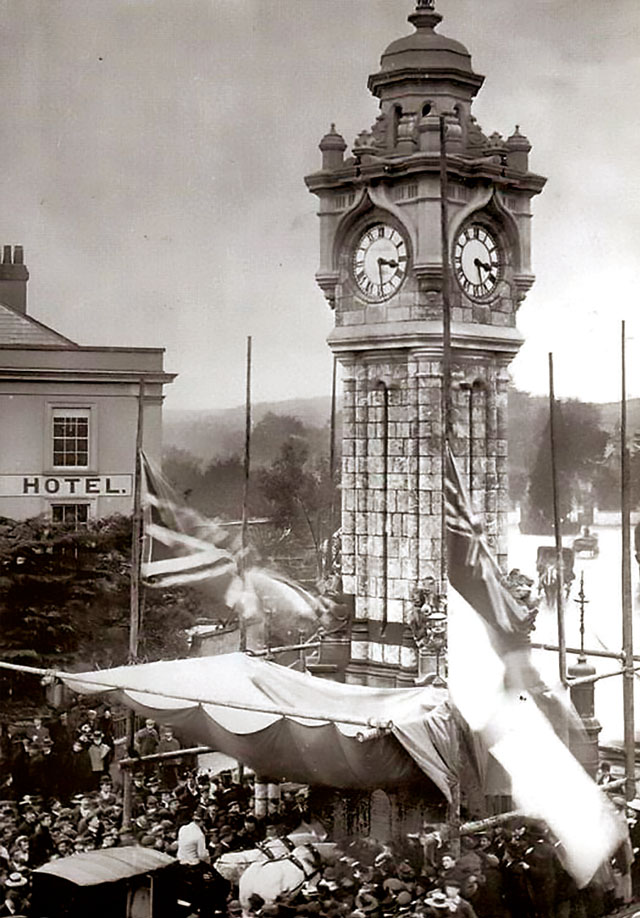Community researcher, Abigail Robinson
In July 1877, 20 years before the Clock Tower’s construction, William Miles paid for horse troughs to be placed on the intersection of New North Road and Queen Street. These granite fountains were for the city’s many working horses, who Miles had a deep concern for the wellbeing of.
This was not his only contribution to the Animal Rights Movement of the nineteenth century. Miles wrote many books on the subject of equine welfare; these include A Plain Treatise on Horse-shoeing (1856), Remarks on Horses’ Teeth: Addressed to Purchasers (1864) and, most famously, The Horse’s Foot and How to Keep it Sound (1856). They became the standard works throughout the century. Miles had previously served as an army officer and later worked as an Exeter magistrate. For many years, he lived in 12 Dix’s Field but it was unfortunately destroyed during the Blitz of 1942.
His work on the subject of horses and their welfare inspired change in the local area. The late nineteenth century brought a movement of like-minded individuals who included Lady Rosalind Northcote, an advocate of local initiatives to educate children about kindness to animals and a lifelong member of the Ladies’ Devonshire Branch of the RSPCA.
William Miles died aged 81, in March 1881. In 1897, his widow, Louisa Anne Miles, erected the Miles’ Clock Tower in memory of her husband. It was built in the centre of the New North Road-Queen Street intersection, in between the horse troughs her husband commissioned in 1877.
In 1896, she established the Exeter Cart Horse Parade, a popular annual event which promoted the kind treatment of horses. The RSPCA awarded diplomas to all first prize winners in addition to providing money for prizes.
The design was by Thomas A. Andrews, a local architect at Bedford Circus. J.W. Singer & Son of Frome cast the bronzes and the wrought-iron lamps. Local stone masons, J. Easton and Sons, constructed the tower. They used red Corsehill sandstone and Chudleigh limestone to create the structure. The Clock Tower was built with enough interior space for the clock to be manually wound but it now uses electricity.
On each four sides of the tower is an inscription, the Miles’ coat of arms, a door leading to the tower’s interior and text from the Book of Proverbs. The south side bears an inscription: Erected in the sixty first year of the glorious reign of Victoria Empress Queen To perpetuate the beneficent work of William Miles, Esquire of this city on behalf of the animal creation by his widow.
Her carriage horse was the first to drink from the fountains after the newly constructed tower was officially opened.
Louisa Ann Grylls was born on December 20th 1817, in Cardinham, Cornwall, to Thomas Grylls and his wife, Sarah. Little is known about her upbringing, however surviving records show that she had nine siblings, who were all raised in Cornwall.
She moved to Devon sometime after her father’s death in 1845. By 1861, she had moved to Exeter, which is presumably where she met her husband, then an Exeter magistrate and animal welfare expert. They married in Somerset during the summer of 1870, although sources conflicted on the exact date. Louisa lived in Devon until her own death in 1907, when she was 89 years old.
Before the Clock Tower’s construction she paid for the St Leonard’s church spire to be built, which was completed in 1884. With her generous donation of £2,457, a 145 foot spire was added to the structure.
